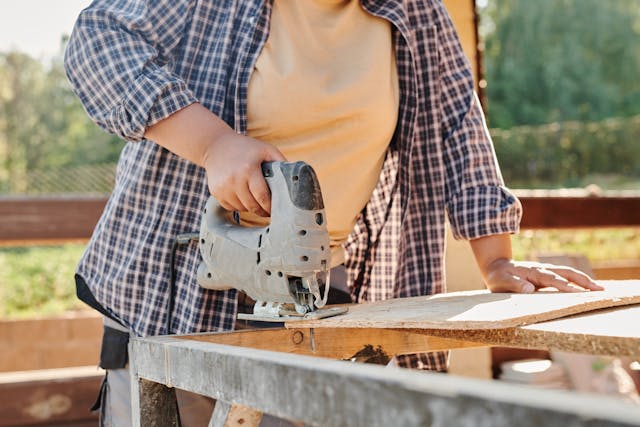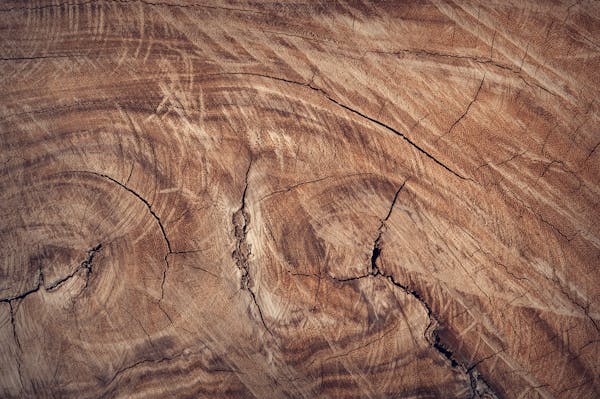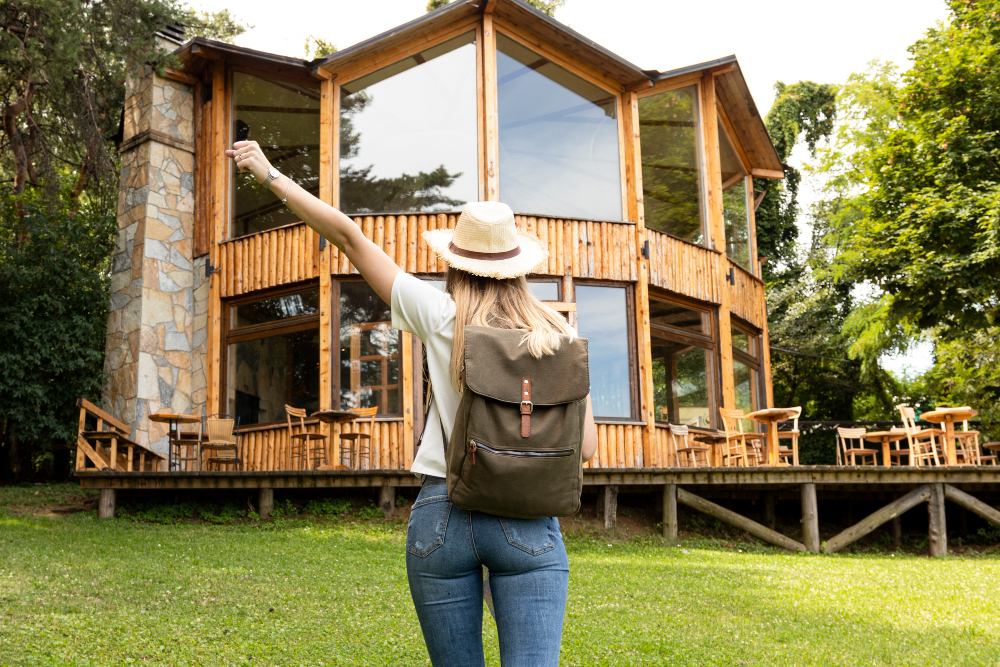
- Using eco-friendly materials for home exteriors reduces reliance on new resources and minimizes landfill waste.
- Recycled wood, metal, and other materials offer a unique aesthetic while promoting environmental responsibility.
- A diverse range of eco-friendly materials is now available, expanding customization options for homeowners.
- Choosing sustainable materials has implications for durability, comfort, and environmental impact.
- Stay informed about material innovations to make sustainable choices that align with modern design trends.
Choosing the suitable materials for your home exterior is a crucial decision that can significantly impact your property’s durability, aesthetics, and environmental footprint. In today’s rapidly advancing construction landscape, innovative materials are emerging that not only elevate the look of your home but also redefine the standards of performance and sustainability. This comprehensive guide is designed to equip homeowners with knowledge about the cutting-edge materials available for modern home exteriors and what to expect from the homes of the future.
The Evolution of Home Exterior Materials
The architectural landscape has undergone a significant transformation over the past few decades, and this change is intricately linked to the materials used in home exteriors. Traditionally, choices were limited to wood, brick, or stone, each with distinctive pros and cons. The focus shifted towards materials that offered greater weather resistance and lower maintenance, giving rise to options like vinyl and aluminum siding.
In recent years, however, a new wave of materials has taken center stage, with enhanced durability, energy efficiency, and eco-friendliness. The drive for sustainable living and the need to combat climate change have led the home construction industry to innovate and introduce materials that protect and reduce the negative impact on our environment.
Cutting-edge materials for Home Exteriors
Fiber Cement Siding
Fiber cement siding is a composite material made from cement, sand, and cellulose fibers. It has quickly gained popularity for its ability to mimic the appearance of natural wood with a fraction of the maintenance.
Description and Benefits
Fiber cement is renowned for its resistance to fire, rot, and termites, making it a durable choice for homeowners in various climates. Its composition also means that it holds paint longer, reducing the need for frequent touch-ups or repainting.
Sustainability and Maintenance Needs
Compared to vinyl, which remains a popular siding material, fiber cement is non-toxic and has a longer lifespan, reducing environmental waste. Although it is heavier and can be more labor-intensive to install, the overall maintenance requirement is significantly lower, proving cost-effective in the long run.
Engineered Wood
Engineered wood is a composition of wood fiber, resin, and wax subjected to high heat and pressure to create a stable building product. This technology allows for a material that provides the timeless aesthetic appeal of wood with enhanced performance characteristics.

Aesthetics and Performance Factors
One of the significant advantages of engineered wood is its ability to resist warping and shrinking, typical issues with natural wood. This makes it a more reliable choice that maintains its appeal without extensive upkeep.
Cost-Effectiveness and Installation
While initially more expensive than some traditional materials, the long-term savings on maintenance and aesthetics can make it a cost-effective solution. Installation is similar to working with traditional wood, ensuring that experienced contractors are well-equipped.
Thermal Insulation and Energy-saving Materials
Innovative insulation materials like spray foam and aerogel are pushing the envelope and enhancing home energy efficiency. These high-performance insulation solutions create a thermal barrier that minimizes heat transfer, yielding substantial energy savings.
The Role of Insulation in Energy Conservation
Effective insulation is critical to a home’s ability to maintain a consistent, comfortable temperature. Properly insulated homes reduce the load on heating and cooling systems, providing a more sustainable way to manage indoor climates.
Benefits of Reducing Heating and Cooling Costs
Lower utility bills are a direct result of a well-insulated home, offering homeowners a significant return on investment. Additionally, the reduced reliance on energy sources contributes to a more significant reduction in the household’s carbon footprint.
Metal Exteriors and Coatings
Metal has long been used for its durability and design flexibility, and recent advancements in powder coating technology have opened new doors for protection and aesthetic possibilities.
Advantages of Using Metal for Durability
Metal siding stands up to harsh weather conditions and has an impressive lifespan. Its strength makes it resistant to impact and helps maintain the structural integrity of your home over time.
Metal Powder Coating for Protecting and Enhancing Surfaces
High-quality metal powder coating is an advanced method for applying a durable and attractive finish to metal surfaces. It offers outstanding protection against the elements and is available in various colors and textures, allowing homeowners to match their unique style.
Eco-friendly and Recycled Materials
For the environmentally-conscious homeowner, a range of eco-friendly materials is now available, including recycled plastic composites, reclaimed wood, and even recycled metal.

Benefits of Using Recycled Materials
Choosing recycled materials reduces the demand for new, raw resources and helps keep waste out of landfills. At the same time, it offers a distinctive aesthetic that resonates with a commitment to environmental stewardship.
Variety and Sources of Eco-friendly Materials
The choices for eco-friendly materials are expanding, with options for every aspect of the home exterior, from the siding to the roofing. Homeowners can source these materials locally through specialized suppliers, ensuring the greatest environmental benefit.
Conclusion
The choice of materials for your home exterior is more than a matter of personal taste—it’s a decision that has implications for your home’s resilience, comfort, and the planet. With a growing array of options available, it’s an exciting time to consider upgrading your home’s exterior with innovative materials that can enhance your living experience while positively impacting the environment.
By weighing the benefits of each material against your specific needs and priorities, you can make an informed choice that aligns with your vision for a modern, sustainable home. Remember that the innovation in materials for home exteriors is an ongoing process, and what is cutting-edge today may become a standard tomorrow. Stay curious and open to new advances, and you’ll be well on your way to creating a home that is as forward-thinking as it is timeless.



